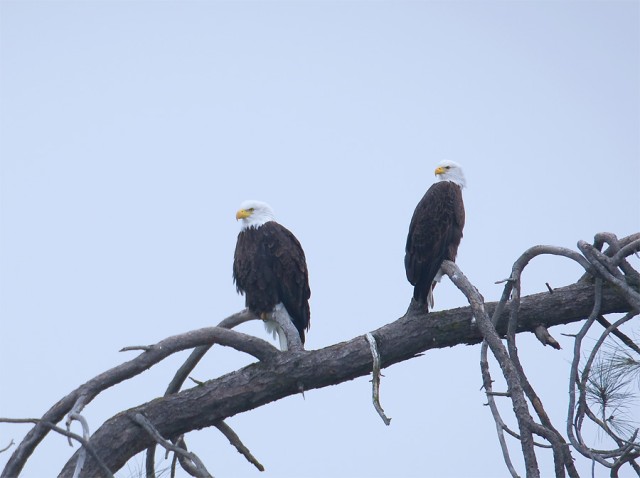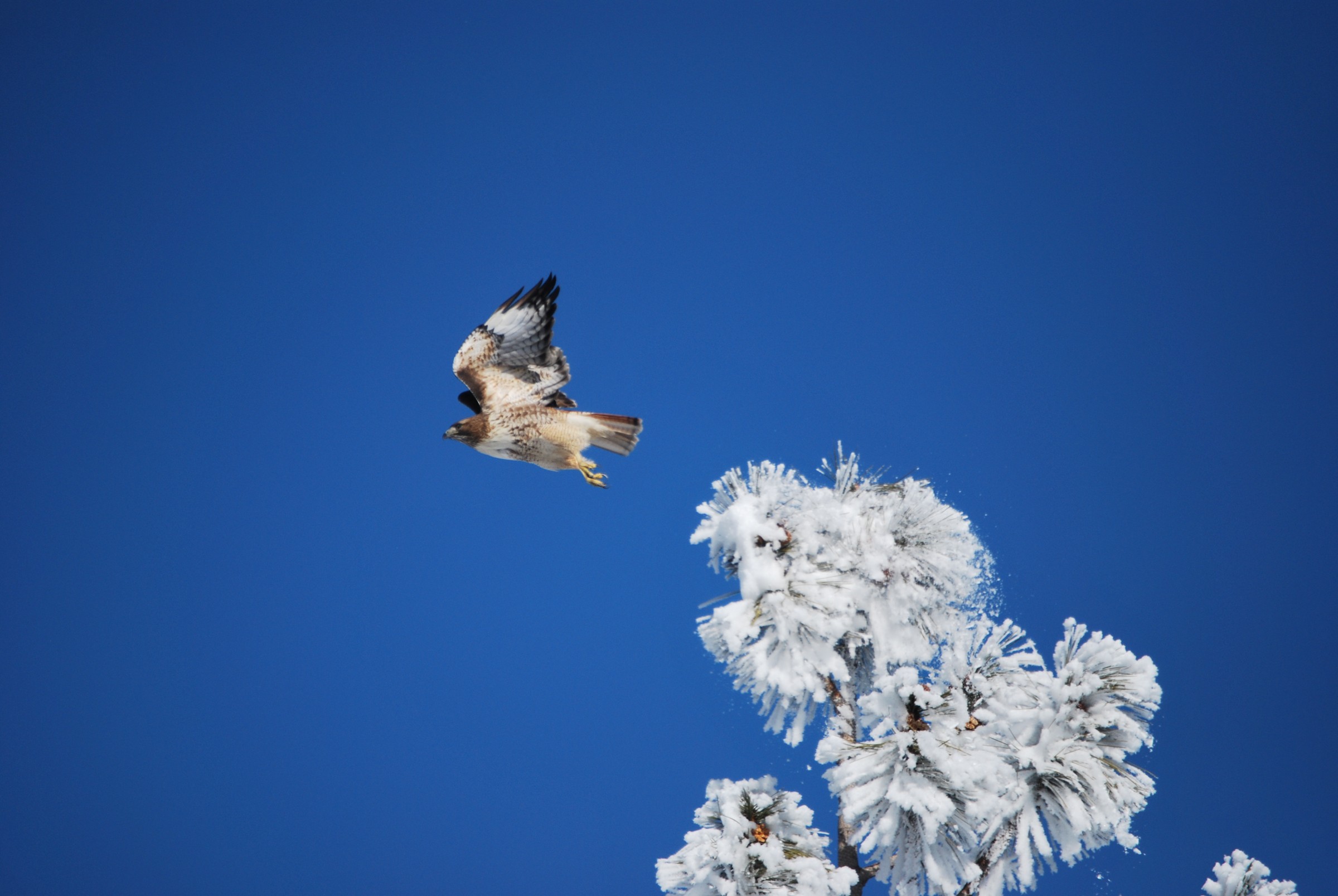SACRAMENTO, Calif. -- The bald eagle, national bird and symbol of the United States of America, a once endangered species, is under investigation again this January as hundreds of volunteers and officials recorded the winter behaviors of the eagles and other raptors during the Midwinter Bald Eagle Survey ending Jan. 12.
The nationwide survey, which was started by the National Wildlife Federation in 1979, takes place each year during the first two weeks of January and now covers nearly 750 standard, non-overlapping survey routes in 43 states. The U.S. Army Corps of Engineers coordinates the survey, a responsibility it inherited from the U.S. Geological Survey in 2007.
Data from the survey informs decisions on how to best promote the resurgence of the bald eagle, which was removed from the federal List of Endangered and Threatened Wildlife in 2007. Eagles are still protected under the Bald and Golden Eagle Protection Act and the Migratory Bird Treaty Act of 1918. Other raptors such as golden eagles and osprey are also counted in the study.
Wade Eakle, regulatory project manager in the Corps' South Pacific Division, is the national coordinator of the MWBE survey. "It is a unique data set because we have so many years of data accumulated," said Eakle. "The more data you accumulate over time, the more powerful it is and the more you can say about it."
Eakle has been involved in the study of raptors since the early 1980s, from his undergraduate work in wildlife ecology training at the University of Arizona -Tucson, to his graduate work in the same field at California State University - Humboldt, to his field work with many federal agencies, including an eagle re-introduction project on California's Catalina Island for the U.S. Fish and Wildlife Service.
"This survey falls squarely within our mission as environmental stewards, and we had already been participating for a long time anyway," said Eakle, who helped usher the transfer of responsibility from USGS to the Corps.
"The Corps' involvement is widespread. There are a handful of states where a Corps employee serves as the state coordinator, and individual Corps park rangers have been personally involved in surveys for more than a decade."
Corps park ranger and natural resources specialist Ella Thurston is one such ranger. She worked with two volunteers to conduct the survey by boat at the Corps' Eastman Lake in Raymond, Calif.
"It gives a consistent and formally documented snapshot, which helps us measure the health of the ecosystem," said Thurston. Eastman Lake is a success story for the protected birds - it is home to one of the most productive pair of nesting bald eagles in the state, according to the California Department of Fish and Game. The pair has fledged 35 young since they moved into the area in 1993.
Once the bald eagles were discovered as an actively breeding pair, the Corps worked with the U.S. Fish and Wildlife Service and the California Department of Fish and Game to develop a management plan at the lake, in accordance with Army natural resource management regulations. "The bald eagle is still listed as endangered in California," said Thurston, "so we act in accordance with those rules to protect them."
Eastman performs two eagle surveys each year - the midwinter survey and a breeding survey in September - and a portion of the park is closed to visitors for much of the year, due to the nesting birds' need for seclusion.
Thanks to modern computer technology, the survey data is easily accessible. The Northwest Alliance for Computational Science and Engineering in Boise, Idaho, maintains a website that provides access to survey results. Various agencies use the data to inform land use decisions, such as the potential impact to raptors of industrial-sized solar and wind projects planned for public lands.
"The midwinter survey is institutionalized, it is a matter of fact," said Eakle. "It is low cost, low effort, and high return. It is one of the few that has gone on as long as it has, and we are lucky to have this much information."
A new survey route was established at the Corps' Martis Creek Lake in Truckee, Calif., this year. U.S. Army Corps of Engineers Sacramento District park ranger Alyson Strickland and regulatory technician Chandra Jenkins established a route ahead of time, based on area maps, and they recorded all sightings of birds, even non-raptors. Although no eagles were sighted there during the survey this year, Strickland said she felt that the trip was productive.
"The fact that the survey was performed, and it has never happened here before, makes it a success. Also, just because we didn't see any eagles, doesn't mean they aren't there."
"It is also really important to have data, because we can't all be in the field all the time. This survey gives us the information we need to make a better habitat for eagles, to preserve this natural resource and national treasure."






Social Sharing